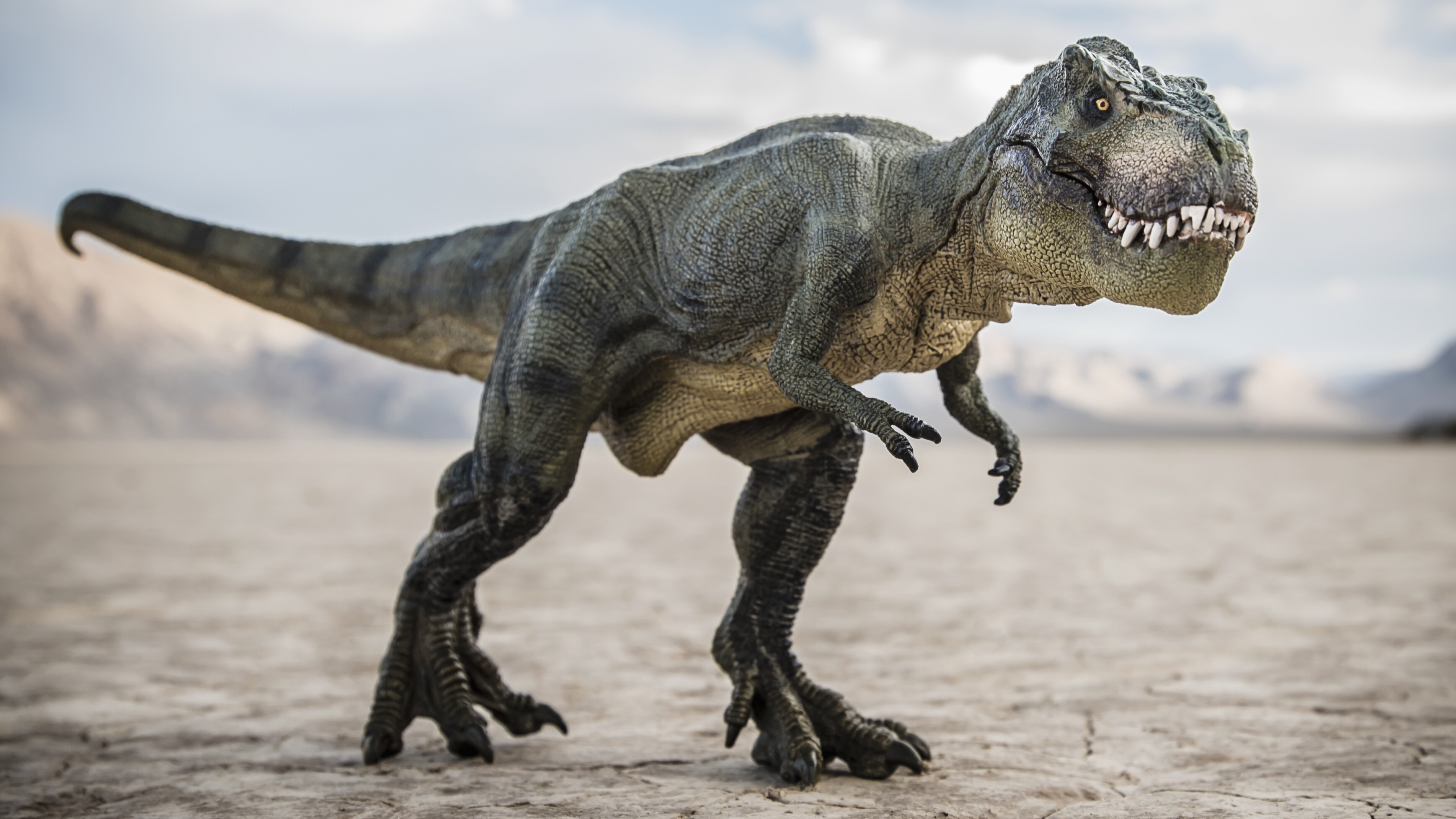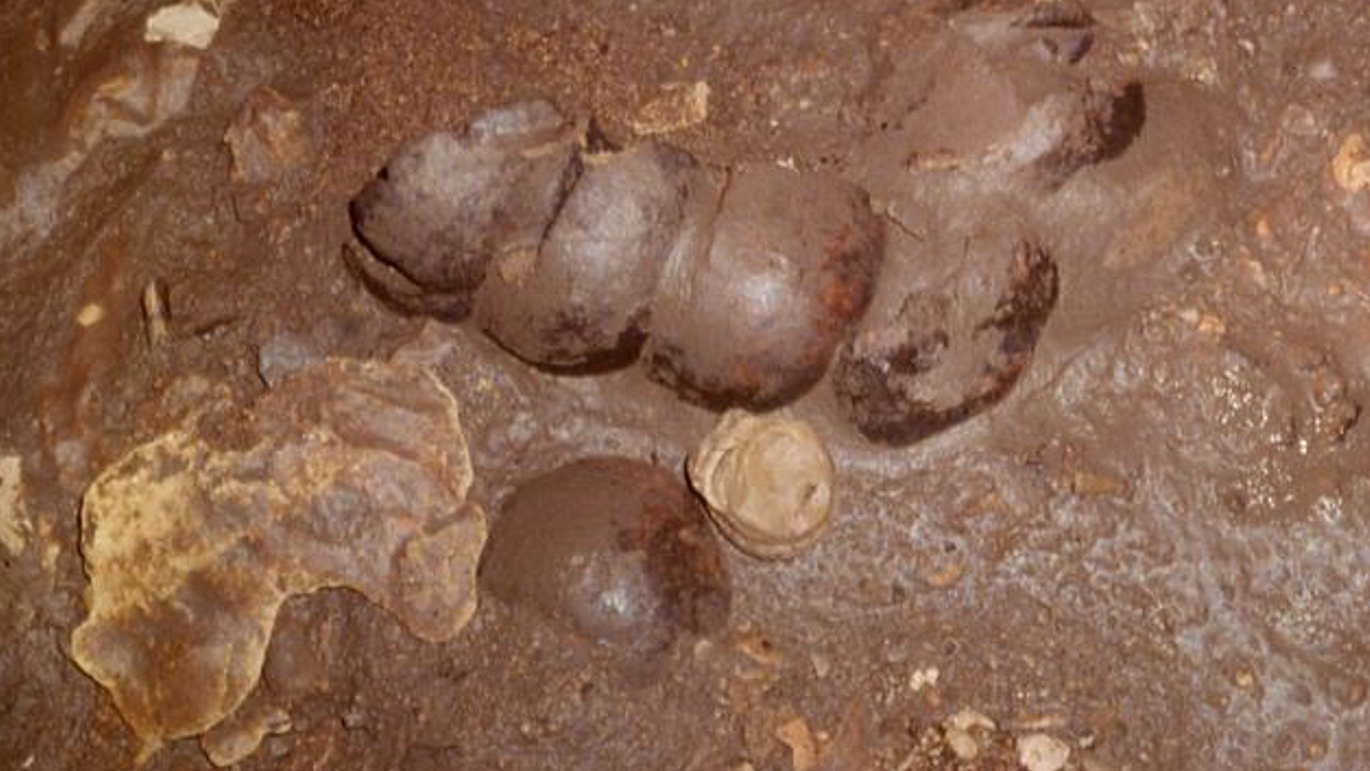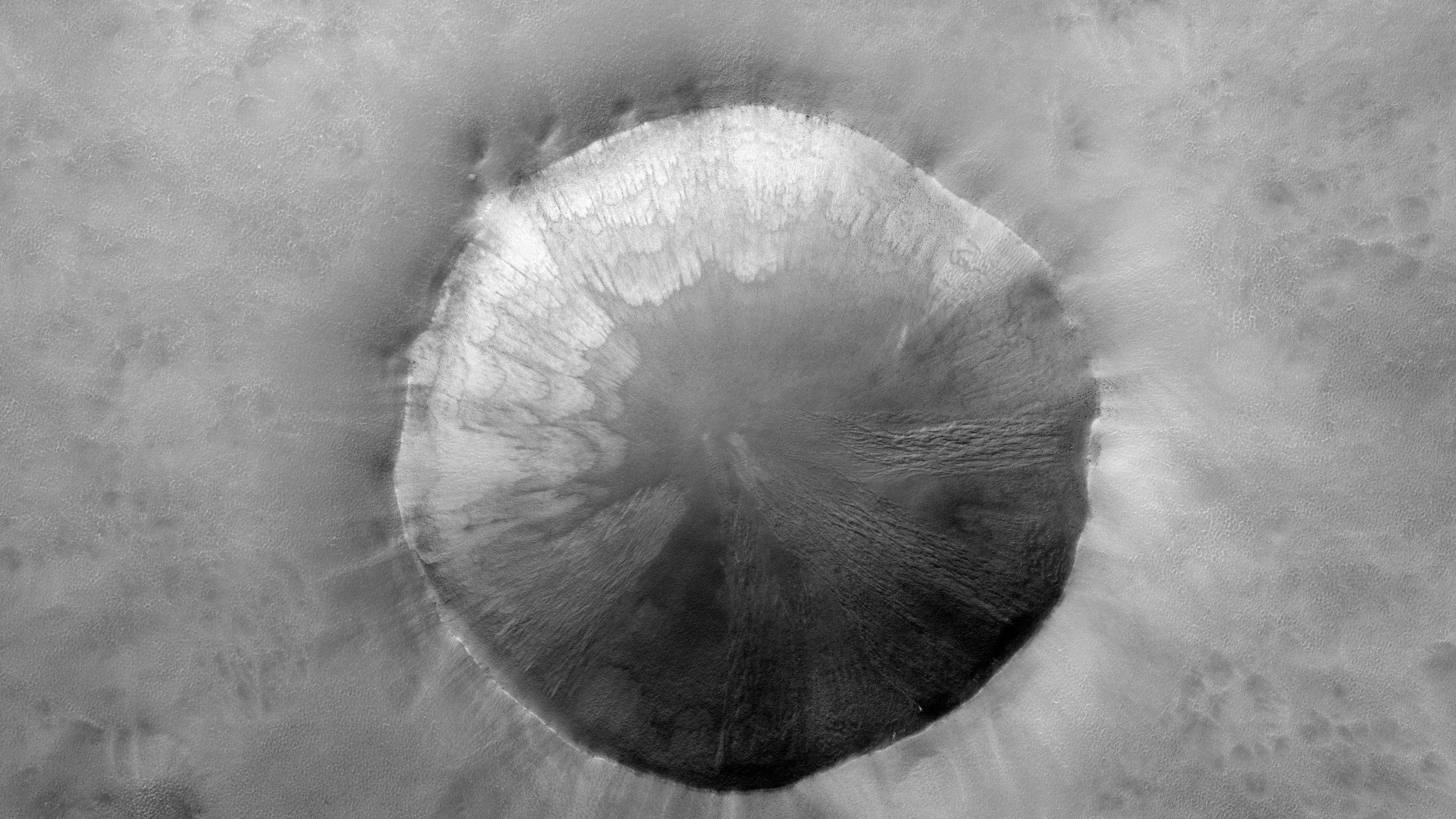The famed Tyrannosaurus rex may have evolved in a very different location from its direct ancestors, new research finds.
The new study builds on earlier research, which suggested that T. rex‘s ancestors arose in Asia and migrated to North America when sea levels fell, providing a land bridge between the continents. The new study, published Wednesday (May 7) in the journal Royal Society Open Science, provides more evidence that T. rex originated in what is now North America — and this fearsome species’ as-yet-undiscovered direct ancestors arose in Asia and migrated across the ancient Earth more than 70 million years ago.
T. rex lived between 67 to 66 million years ago, during the Late Cretaceous period, and could grow to immense sizes — to 12.5 feet (3.8 meters) tall at the hips and up to 41 feet (12 m) long. Most T. rex fossils have been discovered in the U.S. states of Montana and South Dakota, as well as in Alberta, Canada — an area that was once an island continent known as Laramidia that extended through parts of what is now Alaska to Mexico.
T. rex evolved from smaller members of the tyrannosaurid lineage, and the location of where the species originated has long been a hot topic.
Because T. rex has a closer anatomical relationship with Asian tyrannosaurid dinosaurs than it does with North American tyrannosaurids, a 2016 study suggested that T. rex‘s ancestors likely emerged in Asia and migrated to North America. The new study supports this finding, and suggests that T. rex subsequently evolved in North America.
Related: T. rex researchers eviscerate ‘misleading’ dinosaur leather announcement
“The geographic origin of T. rex is the subject of fierce debate. Palaeontologists have been divided over whether its ancestor came from Asia or North America,” study lead author Cassius Morrison, a doctoral student at University College London (UCL), said in a statement. “Our modeling suggests the ‘grandparents’ of T. rex likely came to North America from Asia, crossing the Bering Strait between what is now Siberia and Alaska.”
The researchers used a model based on where and when various tyrannosaurid species had been discovered, their evolutionary trees, and local climate. They found that T. rex fossils are widely dispersed in Laramidia, and the ancestor of T. rex was present in both Asia and Laramidia, indicating that the T. rex‘s ancestor likely migrated from Asia to North America between the Late Campanian and the Early Maastrichtian ages, around 72 million years ago.
“This is in line with past research finding that the T. rex was more closely related to Asian cousins such as the Tarbosaurus than to North American relatives such as Daspletosaurus,” Morrison said. “Dozens of T. rex fossils have been unearthed in North America but our findings indicate that the fossils of T. rex’s direct ancestor may lie undiscovered still in Asia.”
Steve Brusatte, a paleontologist at the University of Edinburgh and co-author of the 2016 study on T. rex‘s roots, called the new study a “fine scholarly work.”
“T. rex was the quintessential American dinosaur: big, bold, ferocious, the ruler of western North America during the final years of the Cretaceous,” Brusatte told Live Science in an email. “But it was actually an immigrant. The most iconic American dinosaur was a migrant from Asia.”
Gargantuan sizes
The new study also modeled how tyrannosaurids (the group of dinosaurs that T. rex belongs to) and megaraptors (a cousin lineage to tyrannosaurids) grew to such gargantuan sizes. They found that megaraptors — which could grow to lengths of about 33 feet (10 m) — evolved their large size at around the same time as tyrannosaurids.
The researchers suggest that both groups rapidly evolved much larger body sizes than their ancestors following a global temperature peak 92 million years ago. This warming event, known as the Cretaceous Thermal Maximum (CTM), was caused by a spike in atmospheric CO2 and methane as a result of volcanic and tectonic activity, during which sea surface temperatures in some tropical regions may have reached 95 degrees Fahrenheit (35 degrees Celsius).
After the CTM, atmospheric greenhouse gas levels and global temperatures fell. The researchers believe tyrannosaurids and megaraptors may have been able to survive and thrive better than other groups of dinosaurs. This is because other large species of dinosaurs went extinct due to the falling temperatures, leaving an open niche for tyrannosaurids and megaraptors to fill and grow to much greater sizes.
“Our findings have shined a light on how the largest tyrannosaurs appeared in North and South America during the Cretaceous and how and why they grew so large by the end of the age of dinosaurs,” study co-author Charlie Scherer, a masters graduate from UCL who is soon to be a doctoral student, said in the statement.
“They likely grew to such gigantic sizes to replace the equally giant carcharodontosaurid theropods that went extinct about 90 million years ago,” he added. “This extinction likely removed the ecological barrier that prevented tyrannosaurs from growing to such sizes.”
The new study shows how the climate affected even the largest and most dominant dinosaurs, Brusatte said. “It seems like tyrannosaurs were able to get big multiple times independently, when cooler climates promoted increases in size,” Brusatte told Live Science. “It was easier to be big when temperatures were cool. The kings of the dinosaurs were not predestined to rule, but were helped along by the climate.”














